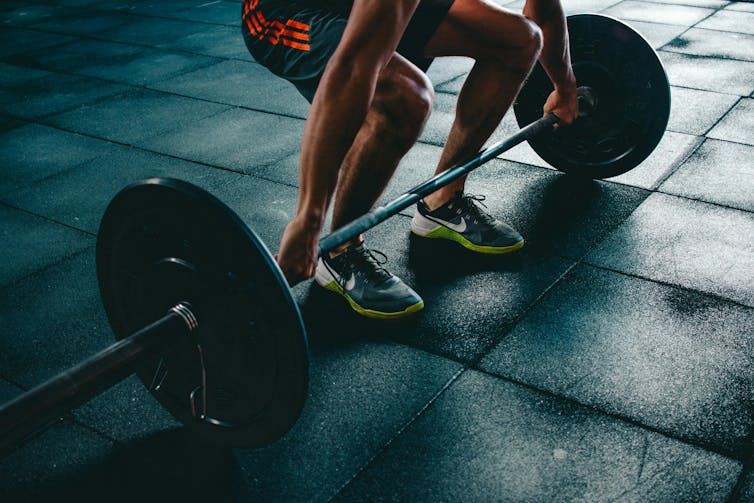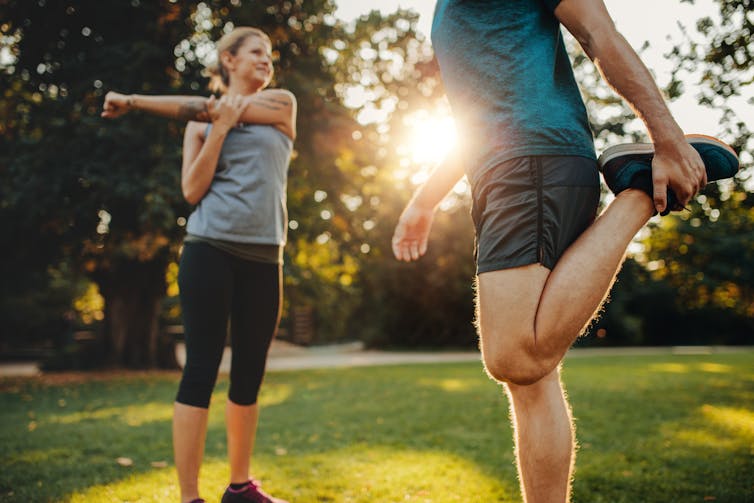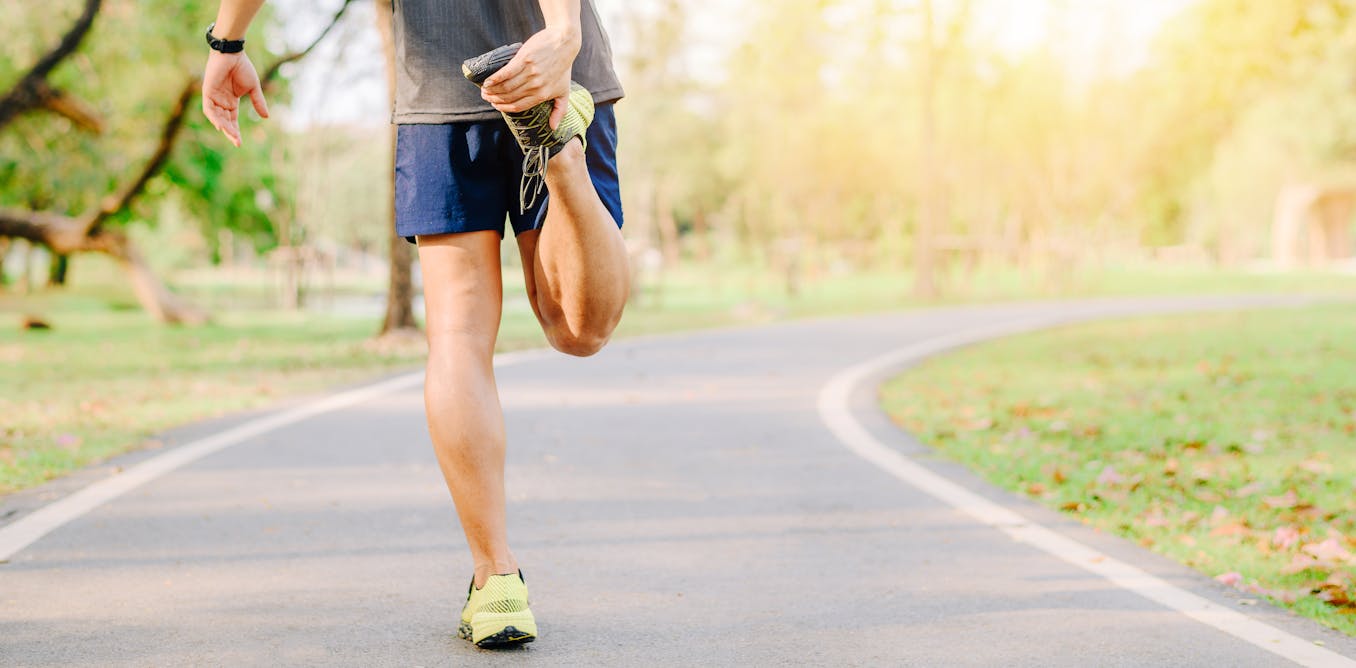Picture this: you’ve just woken up and rolled out of bed. Your feet hit the floor, and your legs buckle. They are in absolute agony – that run yesterday has really come back to haunt you.
And then you remember you forgot to stretch before and after your run. Surely that’s the reason you’re so sore today. Or is it?
We’ve all heard about the importance of stretching before and after exercise. But does it really make a difference? Here’s what the science says.
What is stretching?
There are many different types of stretching, but the two most common are static and dynamic stretching.
Static stretching involves moving a muscle (or muscles) into a lengthened position and holding this for a short period of time – often anywhere between 15 and 90 seconds.
A common example of this would be keeping your heels on the ground while leaning forward to touch the ground with a straight knee to stretch your hamstring muscles.
Meanwhile, dynamic stretching involves actively moving your muscles and joints back and forth through their available range of motion.
Common examples include swinging your legs back and forth, from side to side, or swinging your arms in circles.
Ground Picture/Shutterstock
Stretching before exercise
The main reasons people stretch before exercise are to increase flexibility, improve performance, and reduce the risk of injury.
While we know stretching increases flexibility, its effect on performance and injury is less clear. But let’s look at what the evidence says for each one.
Flexibility
Both static and dynamic stretching increase flexibility, although static stretching seems to have a slightly larger effect.
Short-term static stretching inhibits your sympathetic nervous system (your fight or flight system), which reduces the stiffness of your muscles and tendons. This makes you more flexible straight after stretching.
In the long term, static stretching is thought to make you more flexible by increasing the length of your muscles and tendons or by simply making you more tolerant to the discomfort caused by stretching.
Performance
When it comes to improving performance, this will depend on the type of physical activity you’re doing.
If you are about to move your body through large ranges of motion – something like gymnastics or dancing – then the improvements in flexibility following stretching will likely result in better performance.
On the flip side, research has shown static stretching may impair performance by up to 5% in activities that rely on maximum strength and power, such as shotput and powerlifting.
This might be because of the reduced nervous system activation we mentioned earlier, making it more challenging for your muscles to produce force.
However, significant impairments only seem to occur when stretching for more than 60 seconds. Stretching for less than 60 seconds appears to impact performance minimally (by around 1%).

Victor Freitas/Pexels
On the other hand, dynamic stretching increases muscle temperature and the speed at which your nerves send messages to your muscles, which might improve muscle performance.
Dynamic stretching has been shown to enhance strength and power by a small amount. This might make it a better option before activities that are performed explosively, such as sprinting, jumping, lifting weights or playing team sport.
Injury and soreness
When it comes to reducing injury, whether stretching before exercise is beneficial remains unclear.
Many studies have shown stretching doesn’t have an effect. But a lot of these look at the effect of stretching on all types of injuries, which might not show its true effect.
For example, a broken arm from a tackle would be grouped with a calf strain, but it seems logical that stretching is more likely to reduce the risk of the calf muscle strain than the broken arm.
A recent review did explore the effect of stretching on different types of injuries and found static stretching may reduce the risk of muscle, but not tendon, injuries. To date, there’s no evidence to suggest stretching would reduce the risk of broken bones and contact injuries.
There’s very little research exploring whether dynamic stretching alone can reduce injury risk. One study showed dynamic stretching can improve joint stability, which might reduce the risk of joint injuries (such as ankle sprains). But more research is needed to make any conclusions with confidence.
Many people also stretch before exercise to help prevent muscle soreness after exercise. However, research has shown stretching before exercise has no meaningful impact on muscle soreness after exercise.
Stretching after exercise
The main reason people stretch after exercise is to improve recovery and reduce muscle soreness. The most common approach is static stretching.
However, like stretching before exercise, research doesn’t indicate stretching after exercise reduces muscle damage or soreness.
It has also been suggested really intense stretching can damage your muscles, which might even make muscle soreness worse. But this isn’t a consistent finding, and may only happen to certain people.
However, stretching does promote relaxation. So gentle stretching could be a nice way to wind down after an intense exercise session.

Jacob Lund/Shutterstock
So, what should you do?
Maybe a lack of stretching isn’t the reason you were sore after you run after all. Your legs are probably aching because you simply ran further, or harder, than you normally do.
But that doesn’t mean you shouldn’t stretch.
The available evidence suggests doing some dynamic stretching before exercise will increase flexibility and improve your performance, whether you’re planning to go for a run, play a team sport, or lift weights.
Static stretching can be great if you want to increase your flexibility, just don’t do it right before intense exercise. And after exercise, some gentle static stretching can help transition the body to a more relaxed state.

The post “There are 2 main ways to stretch – the one you should choose depends on what you want your body to do” by Hunter Bennett, Lecturer in Exercise Science, University of South Australia was published on 11/28/2024 by theconversation.com





































Leave a Reply